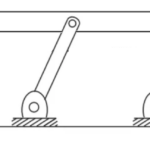The advent of robots has carried forward a legacy that originated with the Industrial Revolution. Since the introduction of the first industrial robot in the 1950s, robotics has undergone several decades of evolution. These conventional machines have since permeated nearly every industry, with the innovation of soft robots now changing the game.
Soft robots are comprised of compliant materials and focus on technologies that more closely resemble the physical characteristics of living organisms. Machines are turning into humanoids capable of human-like tasks. However, the design of each robot ultimately depends on its purpose.
Robotics has become a truly multidisciplinary field that involves an intricate fusion of components, which form a functional entity. Among the pivotal considerations that challenge developers is how to create a reliable, efficient robot that can do more. The choice of building materials in creating a robot stands as a pivotal factor, exerting a profound influence on the overall durability of the end product.
 As each robot has a unique purpose, design, and working environment, different types and materials are used in its development. Durability and accuracy are essential. For example, an industrial robot must navigate and process materials without damage or failure. A rover must maintain efficient mobility while enduring harsh climates.
As each robot has a unique purpose, design, and working environment, different types and materials are used in its development. Durability and accuracy are essential. For example, an industrial robot must navigate and process materials without damage or failure. A rover must maintain efficient mobility while enduring harsh climates.
Humanoid and bio-inspired robots must maneuver without falling, dropping objects, or colliding with others. In biomedical robotics, the movement must be precise without risking its subject. There’s simply no room for errors.
The building materials used to build each robot are selected according to its intended purpose and specific design requirements. Each material has unique physical, chemical, and mechanical properties.
In this article, we’ll cover some building materials used for making robots, including conventional and soft robots.
Metals
The first robots introduced to the world were industrial robots and metals were the ideal material to build these machines. Although not all metals are suitable. Some are more affordable, with the ideal mechanical and chemical properties for the job.
Steel is the most common and least costly material for building robots. It’s readily available, strong, yet lightweight and easy to engineer. The properties of steel can be customized through various processes to fit the requirements of a specific robot. For instance, unhardened mild steel can bear a pressure of 30,000~50,000 PSI. It can be hardened to 100,000 PSI for structural purposes and up to 300,000 PSI for making tools.
Steel can also be molded in several ways, typically via hardening through heat treatment. With a melting point of 1400˚C, the steel body of a robot can sustain most environments. Steel sheets can be easily cut, bent, or joined by welding or low-temperature processes like brazing.
Steel is sustainable and is the most recycled material on Earth.
Aluminum is another popular metal used in constructing robots. It’s as strong as steel but three times lighter. Like steel, it’s rust-proof and non-magnetic. It does corrode in wet or humid conditions but can be easily protected by an aluminum oxide coating.
Aluminum alloys are commonly used for robots. Aluminum can withstand 10,000~40,000 PSI and melt at a temperature of 600~660˚C. Compared to steel, it’s far easier to machine aluminum sheets. Although it’s not possible to solder aluminum, special techniques can be used to weld aluminum parts.
Often, aluminum parts are assembled through threaded fasteners. One disadvantage of using aluminum as a building material for robots is its cost—and the cost typically increases as the part size decreases.
Copper, brass, and bronze are metals used for niche applications in robotics. Often their alloys are used for structural purposes. The alloys of these metals offer a strength of 25,000~60,000 PSI. Bronze and brass have a melting temperature of 900˚C, and copper has a melting temperature of 1080˚C.
Like steel and aluminum, these metals are corrosion-resistant and non-magnetic. It’s also easy to cut and shape these metals. Brass is often used for bearing, while copper is used when conductivity is required. Like aluminum, it’s not possible to solder the alloys of copper, brass, or bronze, so they’re assembled using threaded fasteners.
Stainless steel (SS) is the structural material of choice for robots when corrosion resistance is essential. SS has the same strength and temperature resistance as carbon steel. Stainless steel is comprised of steel that’s produced by adding a high percentage of nickel and chromium and elements like vanadium or molybdenum. For this reason, the magnetic properties of SS can change on bending. For example, a non-magnetic SS can turn into magnetic when bent or deformed.
Compared to other materials, it’s more challenging to machine SS for robotic parts. It requires special welding techniques to join the parts, and sheets are prone to breaking or chipping during cutting.
Titanium is used to construct bio-medical robots as it’s a bio-inert material. Titanium alloys offer a strength of up to 150,000 PSI, with a melting temperature of 1670˚C. As it is a lightweight, corrosion-resistant, high-strength material, it’s also used in several aerospace applications. A disadvantage of titanium alloys is their flammable nature. Titanium is also costly and quite difficult to machine.
Zinc, lead, and magnesium are other metals used to build robotic parts. Zinc is often used as a structural material in recreational robots. Zinc exhibits poor temperature resistance and low mechanical strength despite being as heavy as steel. But it’s inexpensive, so it’s often used to construct robotic toys and lower-end or low-cost robots. Magnesium offers poor corrosion resistance and is costly, but it ‘ sometimes used in robots as a structural material when a lightweight design is essential.
Plastics
Although plastics are no match compared to metals for strength and resistance, they offer unique features as a building material for robots. Most plastics can only withstand 3000~12000 PSI and a temperature of up to 100˚C. However, they’re lightweight, flexible, corrosion-resistant, waterproof, and chemically non-reactive to most acids and bases.
They’re also easy to shape, mold, and machine, making it possible to produce uniquely shaped parts. For example, certain plastics can ensure better flexibility for maneuverability in humanoid and bio-inspired robots. Transparency is another unique property only offered by plastics.
Plastics are more likely to be used for indoor robots requiring little heat exposure or mechanically intensive tasks. This is because most plastic materials are prone to photo-degradation by UV rays and exhibit poor heat resistance. Mostly polymers are used, but sometimes monomers.
Let’s review some of the more common plastics used as structural material in robots.
Polycarbonate is the most common plastic used for building robots. It’s virtually indestructible, with a strength of 10,000 PSI. It can be fully (100%) deformed without breaking. Polycarbonate is well known for its use in making bullet-proof windows. It’s non-reactive to most acids, bases, and oils. It’s also easy to machine with few adjustments. The robot parts built from polycarbonate are often joined together by glue.
ABS plastic (Acrylonitrile-Butadiene-Styrene) is known for being rigid but not brittle. ABS can withstand pressure up to 5000 PSI and tolerate temperatures of -40˚ to 80˚C. It can be deformed up to 20 % before breaking. The copolymer offers improved characteristics of three monomers combined.
PVC (Polyvinylchloride) is similar to ABS plastic in properties. It’s strong, rigid, and can withstand up to 7,000 PSI. It can also be deformed 10-20% without breaking, making it fairly easy to mold or machine into different shapes. PVC is also quite durable and impact-resistant, but it can become brittle. PVC parts for robots can be assembled easily with glue or fasteners. This plastic is typically used in plumbing pipes (and now in robots) because it’s durable and cost-effective.
Nylon is a synthetic polyamide plastic. Typically used as a fabric, solid nylon is useful for robotic structures and is generally used as a material for gears. Nylon has high tensile strength and can withstand pressures up to 12,000 PSI. It’s flexible but can break if subjected to repeated stress. The main advantage of nylon is its low cost, which makes it a good alternative to metals like aluminum. Unlike other plastics, it’s not possible to glue nylon parts, they’re often assembled through threaded fasteners.
Composites
A composite is a material containing two or more simpler substances with different properties. When combined as a composite, the materials exhibit properties not available individually. Several materials fall into this category. Some of the commonly used composites for structural purposes in robotics include carbon fiber, Kevlar, wood, fiberglass, and glass-filled plastics.
Wood
Wood might seem like an odd material for robotic structures, but several wood species are used in engineering applications. Wood is more robust than plastics. Many types of wood have a stiffness-to-weight ratio comparable to steel and aluminum. Wood is tough, strong, a good insulator, and heat resistant, making it an ideal choice for some robotic applications. One drawback is its brittleness. Any force applied perpendicular to its grain can cause it to break.
Carbon fiber
Carbon fiber refers to various carbon composites generally formed by mixing carbon atoms into plastic resins. This low-cost material is highly durable, exhibiting a tensile strength of 300,000~600,000 PSI. Its temperature resistance depends on the plastic resins used to form the carbon fiber.
Most composites with standard epoxy resins can withstand a temperature of 150˚ to 200˚C. Carbon fiber composites with phenolic or polyamide resins can endure temperatures above 300˚C. In low-oxygen environments, this material can tolerate temperatures as high as 400˚ to 500˚C.
Although carbon fiber composites can easily handle rapid temperature spikes, they may degrade with continuous exposure to heat. Overall, this material is lightweight, strong, stiff, heat-resistant, and chemically non-reactive. The only drawback is carbon fiber’s hazardous manufacturing and handling. It can be extremely dangerous to machine carbon fiber without proper protective equipment.
Ceramics
Ceramics are rarely the ideal material for robotic structures because of their fragile nature. However, some high-tech ceramics are sturdier and less brittle than conventional ones. Though these high-tech ceramics are not as strong and tough as metals, they are highly wear-resistant and are decent insulators.
Elastomers
Elastomers are rubber materials that regain their shape after deformation. Two types are used in robotics: carbon-backbone polymeric and silicon-backbone polymeric rubber. The metal parts of robots are typically unable to handle tasks with flexibility. Incorporating rubber into a robot’s joints and other movable parts makes them less rigid and more compliant. Rubber also adds texture to robotic arms.
Rubber parts are often used in cobots that share a working space with humans. The rubber parts are also commonly used in pick-and-place robots. A disadvantage of using rubber in robotic structures is its poor heat resistance. That is why, in many circumstances, the exposed rubber parts of a robot are secured with a protective covering.
Biodegradable plastics
R&D on bioplastics is still in its infancy. It’s a positive initiative in the development of eco-friendly robots. Biodegradable plastics are made from food waste. As biodegradable materials, they degrade under certain circumstances. These materials are typically used to build robots that require no further use after completing a task and often disintegrate independently without external effort. But bioplastics are also used as material in robotic skins, and some are hard enough to make internal parts.
Building materials for soft robots
Soft robots are often designed using smart and multi-functional materials. These include bioplastics, fabrics, gels, elastomers, natural rubber, synthetic rubber, silicones, and soft composites. Special techniques like additive manufacturing or 3D printing, 4D printing, and cast molding manufacture soft robots.
Conclusion
Each robot is unique in terms of its purpose, expected tasks, work environment, and design. This is why so many different materials are used to build them. There are many circumstances where more than one material may be suitable. However, the materials should be chosen solely based on the robot’s design requirements and purpose.
Most industrial robots today are built using metals and metal alloys. Plastics are an option for low-cost, indoor, and light-duty robots. Composites like carbon fiber and Kevlar, as well as ceramics, bioplastics, and rubber are typically used for specific parts or unique robotic structures.
You may also like:
Filed Under: Robotics, Tutorials







Questions related to this article?
👉Ask and discuss on Electro-Tech-Online.com and EDAboard.com forums.
Tell Us What You Think!!
You must be logged in to post a comment.